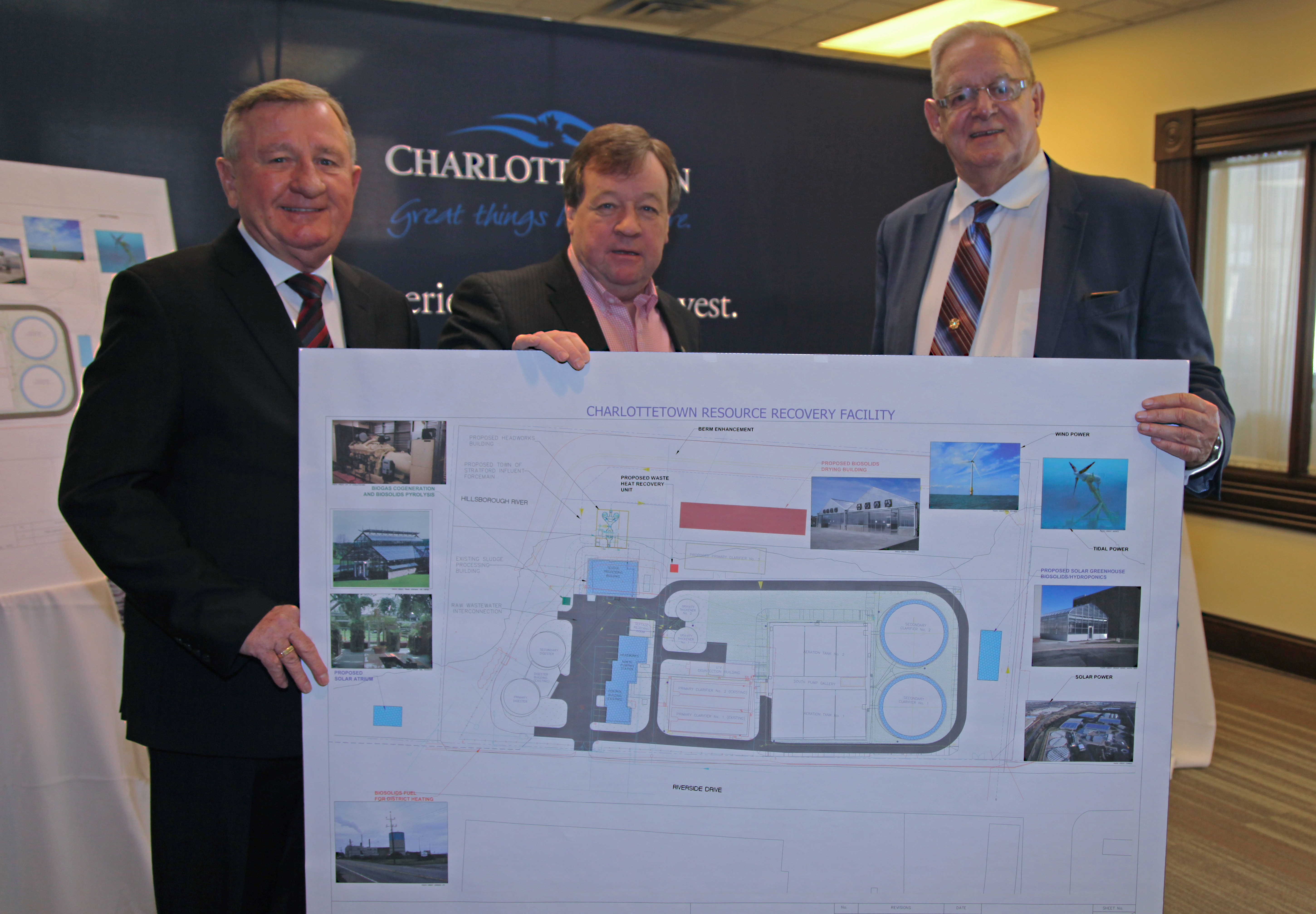The City of Charlottetown plans to transition its current wastewater treatment facility, or pollution control plant, to a resource recovery facility that would have long-term financial, environmental, and social benefits for the Greater Charlottetown Area.
Project components that are currently being considered include renewable energy production, biosolid drying, and end-use research and greenhouse production. In addition, the City will be looking to partner with facilities in proximity of the current plant to identify opportunities for meeting shared outcomes. The facility would be the first of its kind on PEI.
Charlottetown Mayor Clifford Lee said the project takes a big-picture view on public infrastructure. “What was once thought of as a waste facility is going to be a sustainable resource recovery facility. Our vision for this project will not only address anticipated increases in wastewater flow, but it will also identify ways to sustainably manage operating costs as well as provide additional environmental and social benefits well into the future. We have an opportunity to positively impact our community and our environment for generations to come.”

From Left: Deputy Mayor Mike Duffy, chair of the Environment and Sustainability Committee; Charlottetown Mayor Clifford Lee; and Councillor Edward Rice, chair of the Water and Sewer Utility Committee pose with a diagram of the proposed changes at the Plant. Courtesy, City of Charlottetown.
As components of the project are implemented, smart infrastructure principles will be applied, such as installing sensors throughout the facility to centralize facility management via automated controls.
The proposed components being explored for the Charlottetown Resource Recovery Facility include:
Renewable Energy Production and Thermal Energy Recovery
- Tidal power generation using the flow of water to produce energy that can then be utilized by the Plant, partner facilities located close to the Plant and/or to support new facilities on-site.
- Biogas Fired Co-Generation Systems to capture gas produced from the existing digesters and use it as a heat source.
- An Effluent Water Heat Recovery System which would involve using the heat from waste water that is treated at the plant by running it through a water to water heat pump.
Biosolid Utilization
- Biosolid drying would further reduce moisture content in the exceptional Class A biosolid produced by the plant. The product could then be used locally or sent to market.
Climate Adaptation and Coastal Protection
- This would involve further study on the impacts of storm surges, sea level rise, and erosion. It would be a joint effort with other partners to create flood mapping and modeling and identify appropriate measures that can be put in place to mitigate risks to the property.
Research on each of the components of the proposed project is being conducted by city staff, and the feasibility report is may be available as early as the end of 2017. In the meantime, the public is encouraged to provide feedback for the Charlottetown Resource Recovery Facility.
For more information, visit Charlottetown’s website.









